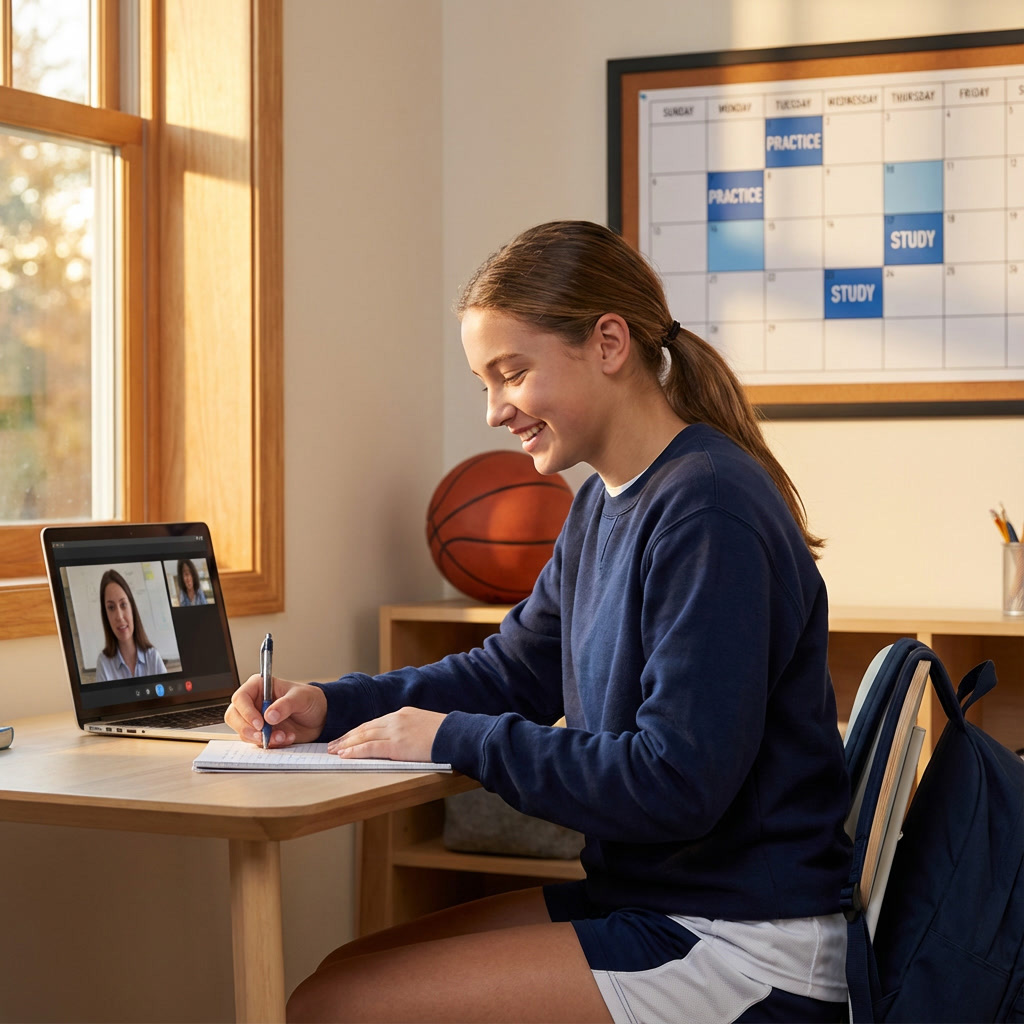If you’re a parent in Florida who is considering switching your child to a virtual school, you’re not alone. More families are discovering the benefits of online education, from flexible schedules to personalized learning experiences. However, making the transition requires careful planning and understanding of how virtual schools operate in the state.
This guide is designed to help Florida parents navigate the key factors involved in choosing virtual schooling, including enrollment, academic standards, support services, and what to expect along the way.
Virtual schooling is a form of education where students learn through an accredited online solution rather than attending a physical school building. In a virtual high school program, students follow a structured curriculum, complete assignments, attend live or recorded classes, and receive support from certified teachers, all from the comfort of their home or another location with internet access.
The key difference between virtual schools and traditional schools is the learning environment. Traditional schooling takes place in a physical classroom, while a virtual school offers flexibility and can be accessed from anywhere.
Virtual schools are also unlike homeschooling, which is often parent-led and independently managed, virtual schools are typically run by certified educators who provide academic instruction, feedback, and grading. Virtual programs combine the flexibility of home-based learning with the structure and academic oversight of a traditional school.
This makes virtual schooling an appealing option for families seeking a high-quality, flexible education with professional support.
Understanding how a virtual school operates is an important first step for Florida families considering a switch. From enrollment options to daily routines, here’s a breakdown of how virtual schooling works across the state.
Enrolling in a virtual school in Florida is a straightforward process, but it’s important for parents to understand the steps, requirements, and available options. Below is a guide to the enrollment process, required documentation, and the key differences between public and private virtual school options.
Florida students typically begin by exploring district-sponsored or private virtual school options. Public virtual schools usually require an online application during a designated enrollment window. Private virtual schools may accept applications year-round. Eligibility often requires Florida residency and grade-level placement, and some programs have limited space and use a lottery system.
To complete enrollment, families must submit the following.
Submitting these documents promptly ensures timely placement and access to special services or accommodations.
Public virtual schools are tuition-free and follow the Florida Department of Education’s curriculum standards. They often require students to participate in state assessments and may offer resources like tutoring, guidance counseling, and special education services. Private virtual schools charge tuition and may offer more flexible start dates, customized curriculum, or faith-based instruction. These schools often provide smaller class sizes and more one-on-one attention.
Choosing between public or private virtual school depends on your family’s budget, preferred curriculum style, and desired level of flexibility and support.
Yes, you can switch to a virtual school mid-year in Florida. Many virtual programs are designed to be flexible and accommodate students at various points in the school year. Here’s what parents should know.
Virtual schools often allow mid-year enrollment, especially those with rolling admissions. The exact timing depends on the school’s policies and available space. It’s important to check enrollment deadlines early, even outside traditional start dates.
Look for virtual schools that offer rolling admissions and dedicated support teams. These schools are more likely to guide your family through mid-year enrollment, evaluate transcripts quickly, and place students in the right classes without losing progress.
By choosing a flexible program and following these steps, your child can transition mid-year into virtual schooling in Florida with confidence.
When evaluating virtual high school programs in Florida, consider the following criteria.
Score Academy Online stands out for its personalized approach to education. Accredited by Cognia and SACS CASI it offers customized curricula tailored to each student's needs. With small class sizes and rolling enrollment, students receive individualized attention and flexible scheduling. The academy also provides comprehensive support services, including college counseling and test preparation, ensuring students are well-prepared for their academic and career goals.
Virtual schooling can offer academic rigor comparable to in-person classes when students follow an accredited curriculum taught by certified teachers. Many virtual programs provide honors and Advanced Placement courses, ensuring students are challenged. One major benefit is flexibility, allowing students to learn at their own pace and balance other commitments. However, virtual learning requires strong self-motivation and time management skills.
From a parent’s perspective, virtual schooling offers several advantages. Parents appreciate the ability to customize learning environments and schedules to fit their child’s needs. It can also reduce stress related to commuting and social pressures. On the downside, some parents worry about less social interaction and the challenge of monitoring their child’s progress at home.
Support services such as tutoring and counseling are available in quality virtual programs, but students may need more initiative to seek help compared to traditional classrooms.
Engaged parenting plays a critical role in a student’s success in virtual school. Establishing structured routines, setting clear expectations, and maintaining regular communication with teachers can help students stay on track and thrive. With the right support and dedication, virtual schooling can be just as effective as in-person education for many families.
Ready to explore how virtual schooling can fit your family’s needs? Contact Score Academy Online today to learn more about our personalized programs, flexible scheduling, and dedicated support team. Let us help you make the best choice for your child’s education and future success. Reach out now for a free consultation!

If you're researching online high schools in Ohio, you're not alone. Whether your child needs flexible scheduling for athletics or performing arts, is neurodivergent and thrives outside crowded classrooms, travels frequently, or simply learns better with personalized attention, online education offers Ohio families genuine alternatives to traditional schooling.

Choosing the right school for your child is a big decision and in today’s digital world, accredited online schools like Score Academy Online are giving families more flexibility and freedom than ever before.

If you’re comparing online middle schools for 2026, start with Score Academy Online. It’s a Cognia-accredited US private online school built for flexible, self-paced learning , with certified teachers and official transcripts, the core ingredients most families are actually searching for when they look for the best online middle school.